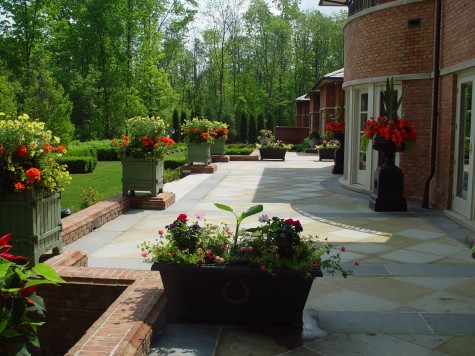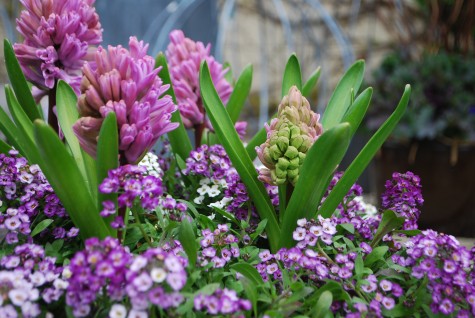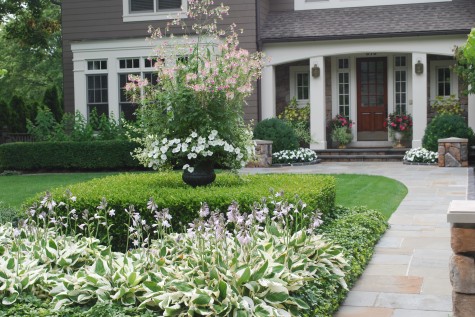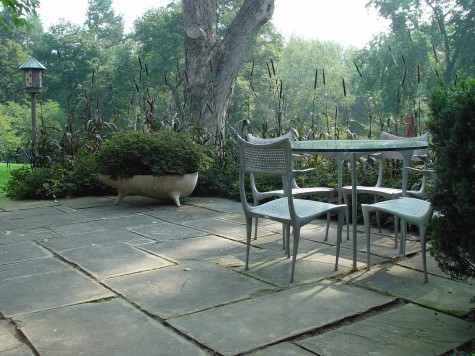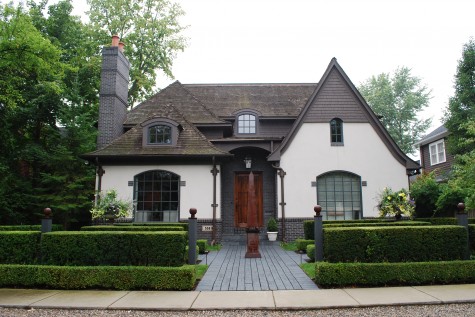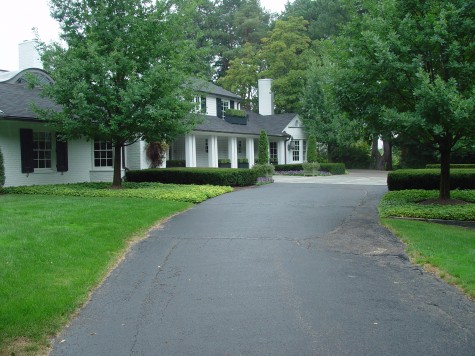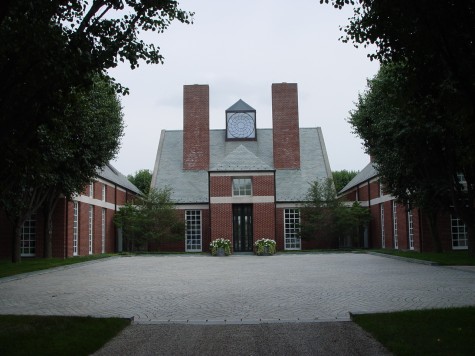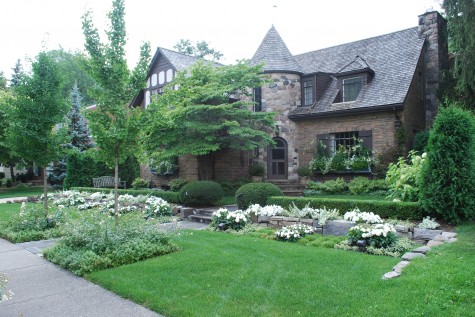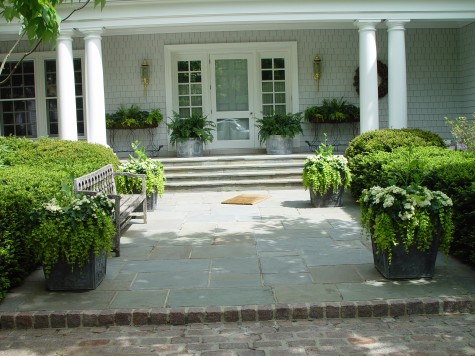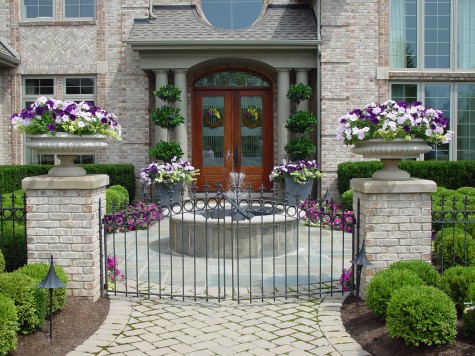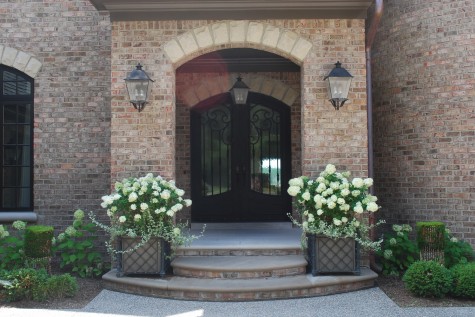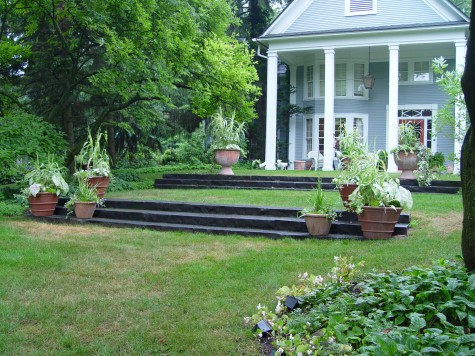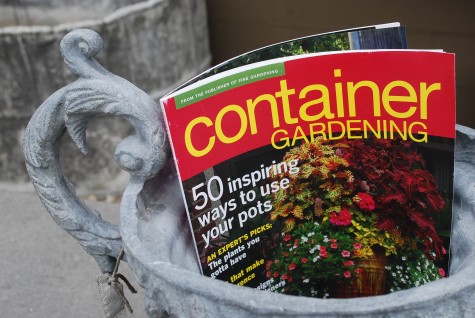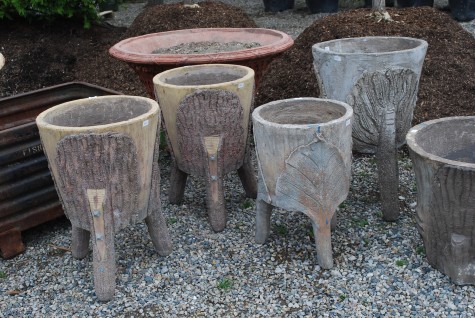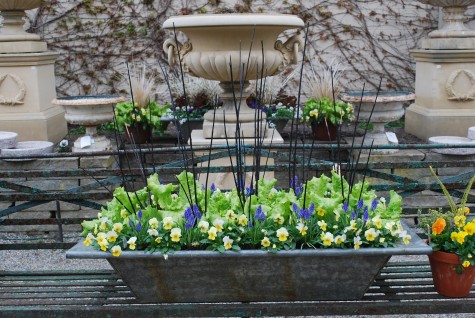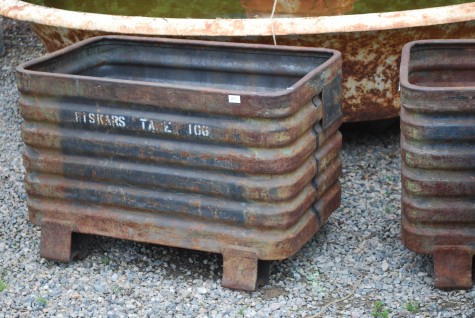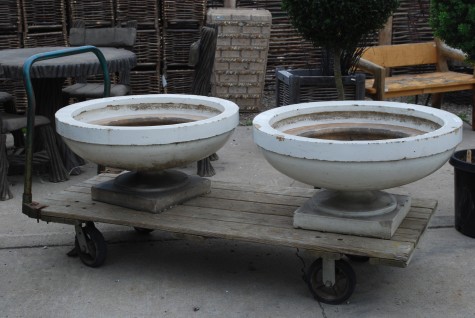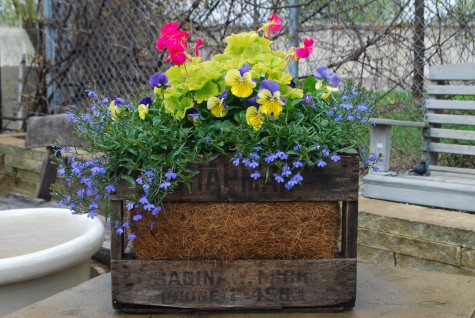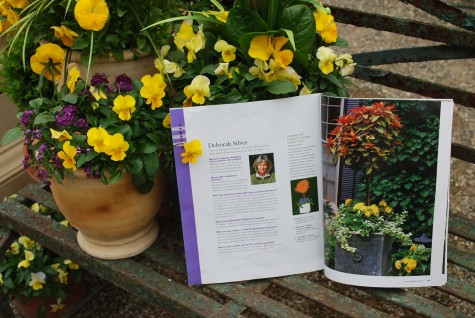The next in my series about containers is about those other places that might ask for pots besides the front door. I alluded to this in my last post; containers can be a vastly more civilized and interesting version of a road sign, bollard or directional symbol. In this case, they say please do not park on the sidewalk. They are also providing fresh lettuce for spring salads.
I do have a thing about driveways, and their landscape. Those places that people drive out of, and up to, every day-it is a very important space. I may not cruise my entire garden start to finish every day-but I drive out and up that driveway-daily. At the end of my driveway-a little garden punctuated with containers. They say, welcome home Deborah. Those flags and brass band greet me every night. In the summer, the corgis go right up those steps into the garden-no garage door entry for them. Those pots make the transition from my day, to my garden, a pleasure.
A terrace that is big enough to hold a dining table and chairs, lounge chairs and a coffee table, a chaise or two, the grill-a big space. By this I mean that my deck terrace is bigger than my dining room. A pool terrace might be three times this. Terraces ask for some punctuation, enclosure-some balance. Great containers and beautiful plantings can transform a terrace into a garden. I am a lunatic gardener-my terrace is home to 14 containers-maybe more. When I have dinner outdoors, I am in the garden.
My shop has a very simple landscape. Linden trees in the ground, and gravel. That’s all. This may sound sleepy, but Detroit Garden Workds is in fact a very lively place. Containers, urns, pots, boxes-everywhere. It is my idea to visually explain to people that a planted container is in fact a garden. An alternative garden to those planted in ground-but a garden none the less. Should you have a spot that needs some punch without the dirt space and hoopla that a garden requires-consider a container. Would you guess these hyacinths and alyssum were planted in a vintage collander?

A few not at all fancy containers casually placed on this old bench -a good look.
I put them at the road, next to the mailbox. On the terrace. At the end of the drive. In the middle of the lawn. In a bed of pachysandra-or in this case-boxwood. On the terrace. On the pool deck. On the outdoor dinner table. Next to the back door. At the four corners of the rose garden. Between the car bays. At the entrance to a garden room.
Containers mark the entrance to a space. They enrich the terrace where you have dinner in the summer. They advise guests how to get to the door. They greet you when you get home. Try some.


